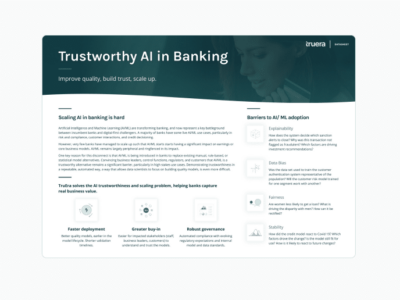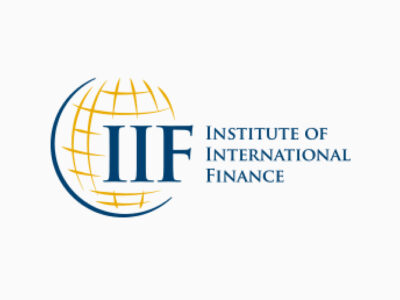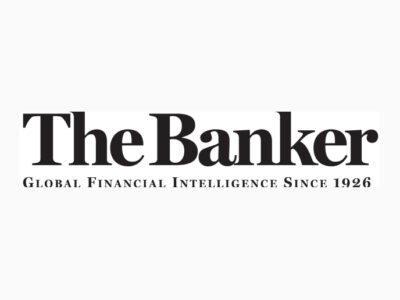Trustworthy AI in banking
Explain, analyze, and monitor ML models.
Improve quality. Build trust. Scale up.
Scaling AI in banking is hard
Artificial Intelligence and Machine Learning (AI/ML) are transforming banking, and is now a key battleground between incumbents and challengers. However, in most banks, uptake remains slow and impact limited.
One key barrier – for business leaders, control functions, regulators and customers – is the quality and trustworthiness of AI/ML models, particularly where the stakes are high.
TruEra’s AI Quality solutions help explain, analyze and monitor AI/ML models – to ensure quality, build trust and enable impact at scale.

Explainability

Data Bias
Was the data set used to train the customer authentication system representative of the population? Will the customer risk model trained for one segment work with another?

Fairness
Are women less likely to get a loan? What is driving the disparity with men? Can it be rectified? And how?

Stability
How did the credit model react to Covid 19? Which factors drove the change? Is the model still fit for use? How is it likely to react to future changes?
TruEra helps banks capture real business value from AI and ML at scale

Faster deployment
Better quality models, earlier in the model lifecycle. Shorter validation timelines

Greater buy-in
Easier for impacted stakeholders (staff, business leaders, customers) to understand and trust the models

Robust governance
Automated compliance to evolving regulatory expectations and internal model and data standards
Use cases in banking
Credit Approvals
- Help customers understand why their loan application was rejected
- Assess if the credit model is unfairly discriminating against particular groups
Financial Crime Compliance
- Convince regulators that the system to automate investigations is reliable
- Help investigators understand why the system has flagged a particular transaction as suspicious
Fraud
- Monitor the performance and stability of a fraud-detection algorithm over time
- Explain how customers can reduce the risk of their transactions getting blocked erroneously
Targeted Marketing
- Assess if the marketing engine is mis-selling products to customers (e.g. loan to a vulnerable customer)
- Explain to a Relationship Manager why they are being advised to promote a particular product
Financial Markets
- Demonstrate that a trading algorithm does not pose a systemic market risk
- Get buy-in for a new (ML) pricing model by providing meaningful comparison with existing (non-ML) model
Operations Automation
- Provide early warning when data drift is likely to impact the accuracy of models used to automate operational processes
- Assess the reliability of model to determine the appropriate level of human supervision
Why use TruEra for banking?
Deep banking expertise
Proactive engagement with financial and data regulators
Model quality through the lifecycle: development, validation, monitoring
Reliable explainability: fit for purpose in a regulated industry
Broad support for different ML model/ data types and platforms
Easily embedded into banking tech stacks
Resources
Find out what you can do with TruEra
Are you ready for better AI Observability? Get started now for free, or talk with one of our experts.



